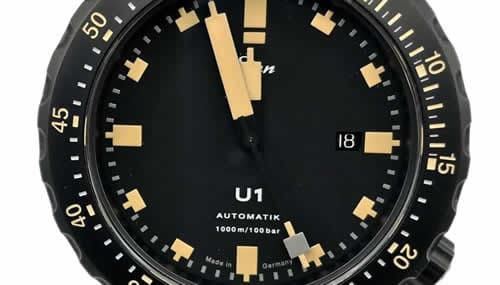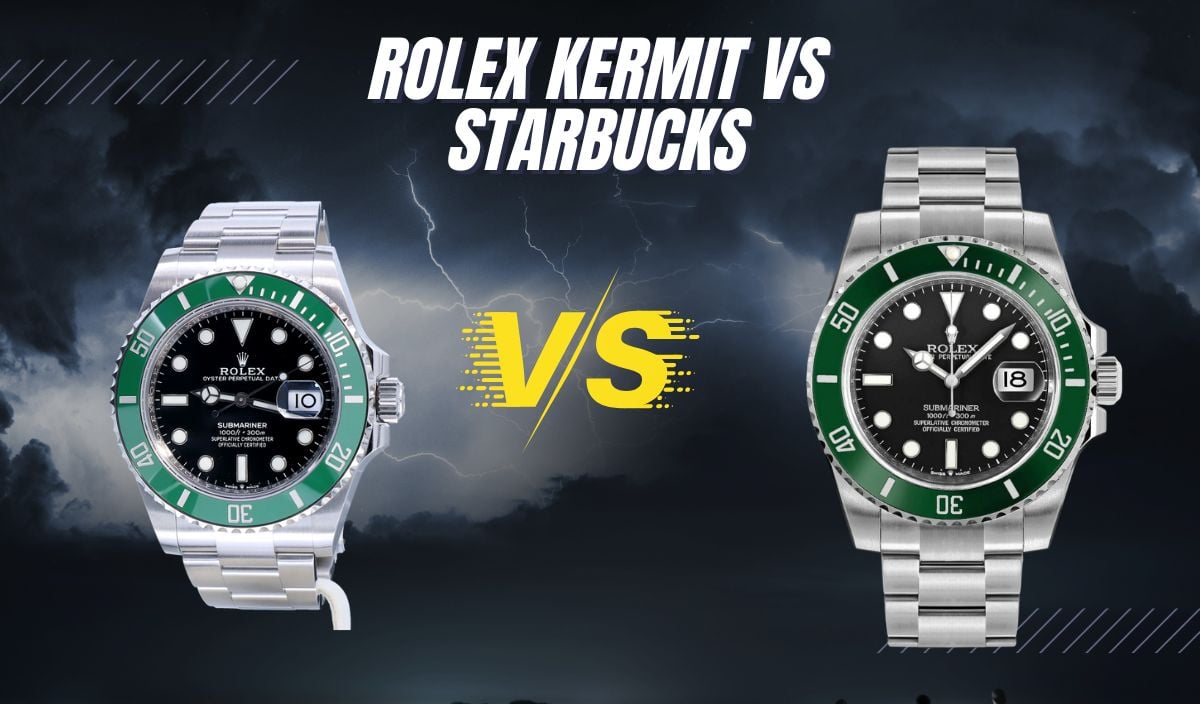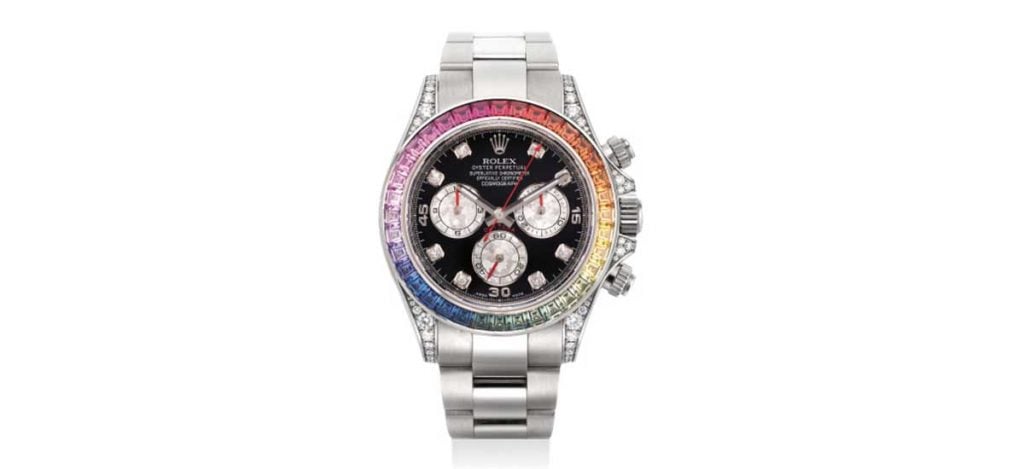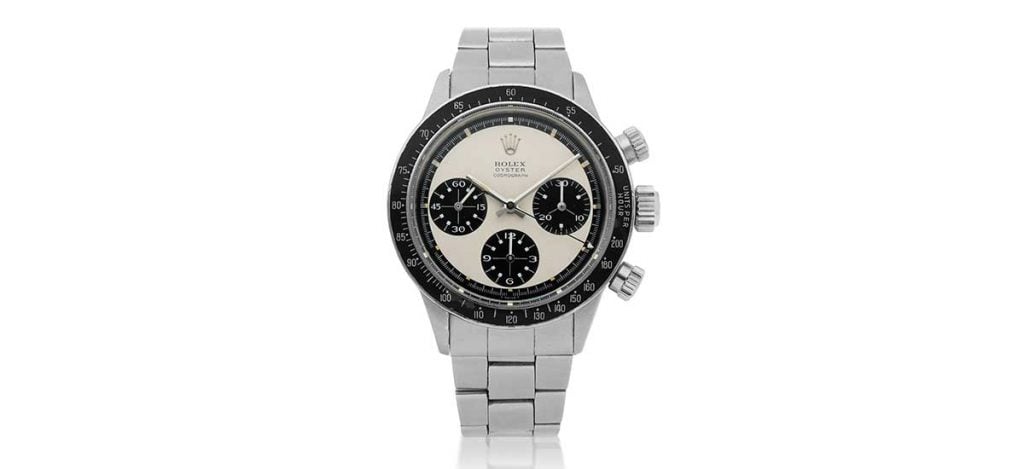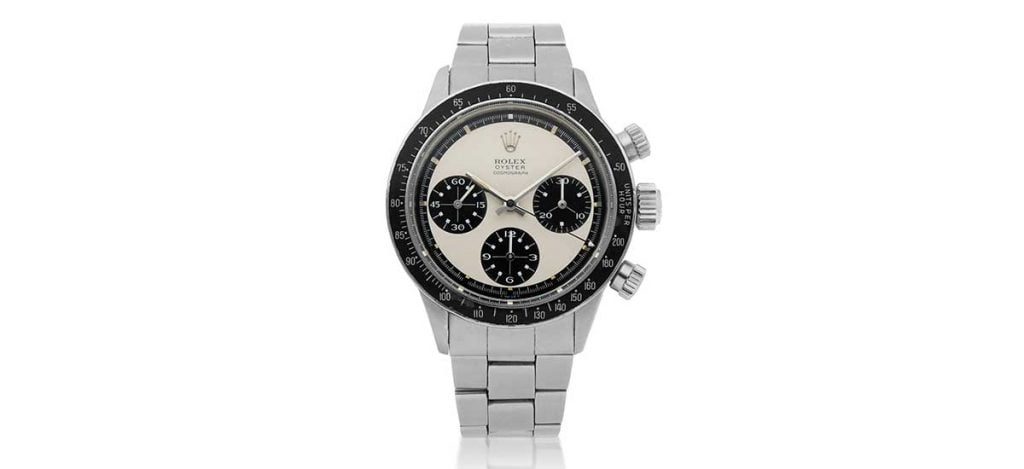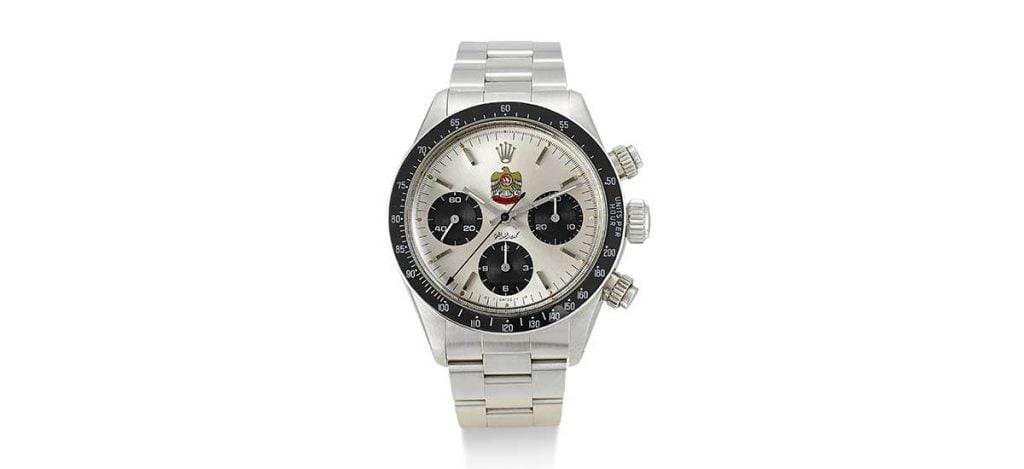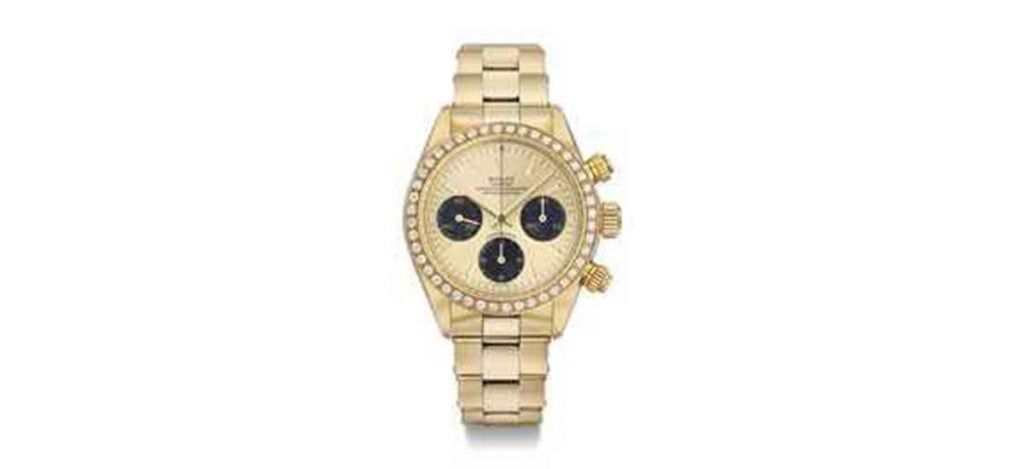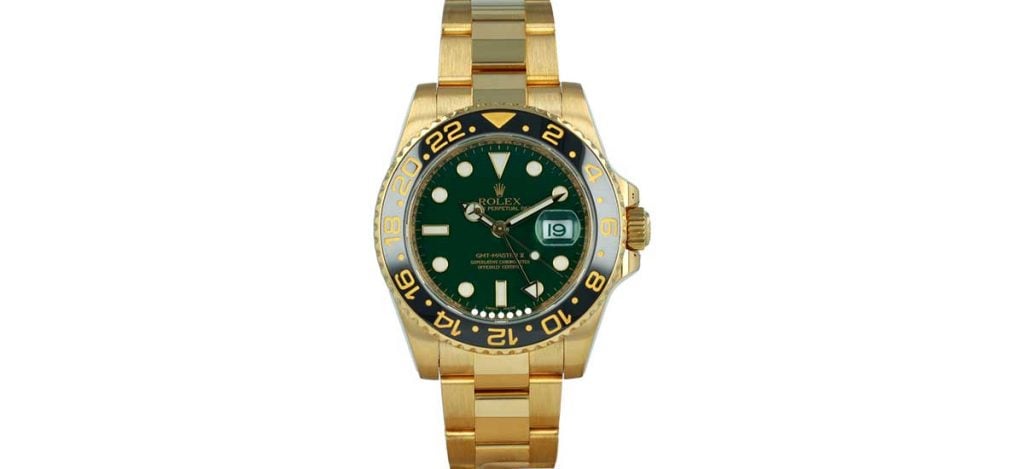
The Rolex Oyster Perpetual and other models have long been key targets for counterfeit production, with many replicas emerging from China. In April last year, US Customs and Border Protection officers in Indianapolis confiscated hundreds of fake Rolex watches.
The watches came in two shipments that originated in Hong Kong and were destined for Brooklyn, New York. If sold as real, they would have been valued at more than $10 million.
Benjamin Clymer, the founder of Hodinkee, a top watch magazine, once remarked that there are more fake Rolex watches on the market than all other fakes combined.
With technological advancements, many producers of counterfeit Rolex watches have improved their manufacturing processes, making it extremely difficult to tell a fake Rolex watch from the real deal.
The Oyster Perpetual collection is our focus today because it embodies the brand’s exquisite craftsmanship and prestige. It features a lineup of watches that all draw inspiration from the original Oyster, which was the first waterproof and dustproof wristwatch created in 1926.
Since it’s a very popular collection that millions have come to love over the years, thousands of replicas are produced yearly.
Below, we will be discussing everything you need to know about this legendary collection and some telltale signs of questionable authenticity to look for when buying a Rolex Oyster Perpetual.
About Fake Rolex Watches
Do you want to know why there are so many fake Rolex watches in circulation? It is because Rolex is the number one producer of G.O.A.T. models aplenty. Rolex is the apotheosis of Haute Horology. Rolex is the peak of all that luxury stands for.
Rolex is the symbol of class. Rolex is representative of precision, functionality, timeless design, elegance, and sophistication in the world of Horology, and unfortunately, not everyone can afford that.
Rolex has earned so much popularity and reputation over the years, and as they say, being the top dog in the market attracts a pack of hungry wolves. The staggering prevalence of counterfeit Rolex watches on the market makes it the most faked watch brand in the world.
If there are so many Fake Rolexes on the market, it only means one thing: massive demand for them. So the big question is, why would someone opt for a fake without an original? Well, let’s look at it this way, the demand for fake Rolex watches can be attributed to various factors, including the prestige of owning a Rolex watch.
However, Rolex has meticulous control over supply. So unlike other luxury brands, the Swiss Marque adopts a strategy of gradual production increase instead of rapid expansion to maintain controlled growth and stability. With an estimated annual revenue of over $8 billion, Rolex has created exclusivity and desirability around its products, which explains why owning a Rolex is considered an achievement.
This high demand, coupled with carefully controlled supply, has led to a surge in the availability of imitators of varying quality. For instance, the infamous Canal Street market in New York has long been associated with blatant replicas sold at dirt-cheap prices. Interestingly, they have also improved their craft and produced deceptive copies to deceive unsuspecting buyers willing to pay a premium price.
The Federation of the Swiss Watch industry reports that counterfeiters produce approximately 1.6 million fake Rolex watches annually, in stark contrast to the 1 million original ones produced by the company.
The availability of fake Rolex watches, blatantly obvious and deceptively well-made, poses a real challenge to the company. Despite this, the watch’s relentless demand and shortage of authentic pieces demonstrate Rolex’s enduring appeal and desirability among consumers and collectors alike.
What Makes the Rolex Oyster Perpetual So Special?
The Rolex Oyster Perpetual is a sophisticated and elegant masterpiece combining intricate detailing, exceptional craftsmanship, and remarkable reliability. It was in 1926 that Rolex launched the legendary ‘Oyster’ case, which was the world’s first case to be water- and dust-proof.
The Oyster case was hermetically sealed and featured a screw-down crown which allowed it to withstand depths of up to 100 meters. Years passed, and the first self-winding mechanical ‘Perpetual’ movement was released in 1931.
These two important inventions merged to form the Rolex Oyster Perpetual and would serve as the foundation for millions of Rolex watches from that point on, making it extremely popular.
From its groundbreaking creation as the world’s first waterproof and dustproof wristwatch in 1926 to its triumphs in the English Channel swim and record-breaking land speed races, the Oyster Perpetual has cemented itself as an icon of endurance and precision.
Below we highlight the captivating legacy of the Oyster Perpetual and its enduring impact on the world of timekeeping.
- Classic Style and Design
The Oyster Perpetual embodies an incredibly well-made construction and democratic pricing; it represents the purest distillation of Hans Wilsdorf’s vision of creating the definitive Swiss-made wristwatch.
- Timeless Form and Function
The Oyster Perpetual today inherits the legacy of the original Oyster in addition to avant-garde technicalities. This emphasis on durability and reliability has remained a hallmark of the Oyster Perpetual line.
- Direct Descendant of the Original Oyster
The Oyster Perpetual name reflects the two foundational elements of its creation. “Oyster” refers to the pioneering waterproof case, and “Perpetual” signifies the self-winding movement invented by Rolex in 1931. Over time, the Oyster’s Perpetual name became a prefix for various models within the Rolex collection, symbolizing their water resistance and automatic movement.
- Excellent Chronometric Precision
Oyster Perpetual features in-house, self-winding movements that are COSC-certified and built to exceptional standards. Incorporating advanced technologies, such as the Parachrom hairspring and Paraflex shock absorber, enhances accuracy, stability, and shock resistance.
- Timeless Choice for Men and Women
The Oyster Perpetual’s popularity transcends gender, with its more diminutive sizes initially appealing to women. However, the introduction of the 39mm model in 2015 and the 41mm model in 2020 also expanded its appeal to men.
The watch’s design, characterized by its curved lines, slim lugs, and polished and brushed surfaces, has remained remarkably consistent since its launch in 1931. This enduring design and its versatility allow the Oyster Perpetual to complement both casual and formal attire effortlessly.
The Oyster Perpetual remains Rolex’s hallmark of intricate detailing that will continue to exude sophistication, presence, and elegance. This explains why it has become the Holy Grail for watch enthusiasts, with everyone longing to be part of the elite few who possess it, making it a target for counterfeiters.
How to Spot a Fake Rolex Oyster Perpetual
We have already established that the Rolex Oyster Perpetual watch is a direct progeny of the premier watertight Rolex Oyster timepiece manufactured in 1926. Apart from being the world’s first patented waterproof watch, the Oyster Perpetual bears the brand’s founding legacy and carries the classic and timeless spirit of its era.
The Swiss Customs Service reported that approximately 40 million counterfeit watches are released into circulation each year, and we know that Rolex watches make up the highest numbers there.
Today, with technological advancements, counterfeit Oyster Perpetual watches are looking so good and so close to the original that identifying an authentic one is quite a challenge. But there is always a way out. To help you distinguish between a fake and a real Rolex Oyster Perpetual, we have put together this detailed list of 10 factors below.
Watch Price
The Oyster Perpetual is one of the brand’s long-established models, and the brand seems to be constantly increasing the price as the months roll by. But, at the time of writing this article, the retail price for the smallest model of the Rolex Oyster Perpetual starts at $5,500 and increases with size.
The new 2020 update introduced the Rolex Oyster Perpetual in 28mm, 31mm, 34mm, 36mm, and 41mm sizes with enchanting stand-out colorful dials that increased the appeal for Oyster Perpetual watches.
The price of a new Oyster Perpetual 41mm model, which is powered by Rolex’s new-generation Caliber 3230 movement, is $6,400 on the brand’s website at the moment.
However, new Rolex watches can be hard to find as the brand does not sell anything online, so to purchase one, you will have to get on the waitlist of any of Rolex’s 1816 authorized retailers around the world. This can sometimes be hard for prospective buyers without an established relationship with an authorized distributor, which leads people to the gray market.
On the secondary market, Oyster Perpetual watches command higher prices. Expect to spend around $10,000 for the 41mm Ref. 124300 (or even up to $30,000 for the coveted Tiffany dial) and around $8,000 for the 36mm Ref. 126000.
It is good to be guided by these facts because while everyone loves a great discount, a Rolex Oyster Perpetual with a really low price might indicate more risk than reward.
A deep discount for such an in-demand timepiece like the Oyster Perpetual is a red flag. Period. It doesn’t matter if the vintage market is highly reputable because there are many scammers out there who sell items through trustworthy marketplace websites with great reviews too.
If the price of the Oyster Perpetual is too good to be true, it probably is. If the low prices are so stunning that it isn’t available anywhere else, then you should figure out quickly that there’s a good reason for that – the watch is not real.
Unless you are buying from an authorized dealer, be suspicious of stores offering highly discounted Oyster Perpetual watches because there’s a good chance you’d wind up paying for a counterfeit timepiece or get absolutely nothing in return.
Serial and Reference Number
Every Rolex Oyster Perpetual watch comes with a distinctive serial number. The serial number or unique identifier can be found engraved between the watch casing lugs, under the bracelet, situated at 6 o’clock, and is equally listed on the papers (or certificate) from Rolex.
Each number corresponds to a particular year or period in which the watch was manufactured, giving you valuable knowledge on craftsmanship, authenticity, and even cult status.
Also called the model number, the reference number of your Rolex watch is a 4 – 6 digit code engraved by Rolex in every single timepiece. You can usually find it on your Oyster Perpetual between the lugs on the side of the case at the 12 o’clock position, between the bracelet.
The Rolex reference number is equally listed on the papers from Rolex and provides useful information about the model or collection. It also tells you what material your watch is made from. Generally, the first two to four digits tell us the model or collection (i.e. whether it is an Oyster Perpetual collection, a Submariner, Sea-Dweller, or GMT-Master).
Depending on the digits in the mix, you will be able to identify whether your Rolex watch is made of stainless steel, Everose Rolesor (a combination of stainless steel and Everose gold), Rolesium (a melange of stainless steel and platinum) or 18K Yellow/White gold. It’s best not to rely on the image alone to ascertain the watches’ inherent value.
The reference number also determines the bezel type, whether it is engraved, engine-turned, fluted, totable, or hand-crafted. A fake Rolex Oyster Perpetual watch will feature a misplaced serial number or a reference number that does not match the design, materials, and model or the production year of the watch.
Again many counterfeit Rolex Oyster Perpetual watches do not have their serial or reference numbers engraved on them. Rolex has been engraving these unique numbers on their watches since the 1920s, and they always engrave them deeply into the metal. Replicas often inscribe serial numbers with acid.
Case Finishing
The devil is in the details, they say, and we know very well that it is the tiny details that make or mar the entire timepiece at the end of the day.
The finishing of the case of any watch is a major determinant of how the overall look, feel, and design will be. The finish of a case is a manufacturing process in which the surface is manipulated by polishing, brushing, and/or beveling to render an attractive surface appearance to the metal.
The price of a watch can even be justified or criticized based on the quality of the case finishing so this is a very important point. As expected from an ultra high-end brand like Rolex with over 100 years of high precision manufacturing techniques, the case always displays a superlative artisanal hand finishing capacity.
Every Rolex Oyster Perpetual receives an initial polish from a machine, but after that, it is finished and polished by hand. The finishing is often perfect, and there has never been a report of visible imperfections.
To identify a fake Rolex Oyster Perpetual, examine the case closely for a high level of finishing. There should be fine details that give the case a sharp, elegant appearance. A finely polished case reflects light beautifully offering the watch a luxurious and sophisticated look.
Apart from polishing, brushed finishes are also commonly used. Straight grain and circular grain brushing are used on the more circular parts of the case, such as the case back, and the Oyster Perpetual Ref. 126000 perfectly illustrates this with a fine circular grain under the lugs and around the case back.
The case of a fake Rolex Oyster Perpetual will display a very shallow level of brushing that will allow the polished surface to shine through (brushing is usually done after polishing). The lines of the case will also appear soft, dull, and smoothed over rather than crisp, sharp and reflective, and smooth as possible.
You may also notice that the hairlines don’t appear uniformly parallel, the brushing of the top and side of the case sort of ‘leaks’ into the chamfer, and the surface of the hairline finish doesn’t have a grippy surface or isn’t pronounced.
Any sign of imperfection or flaw in the finishing of the case is not something you should overlook, as it might be a fake watch.
Crown
Laser-etched Crown
Rolex is no stranger to replicas. The brand knows that many of its iconic models have been imitated by counterfeiters and is doing all it can to put an end to this. In 2002, a minuscule detail was introduced as an additional security feature to checkmate the illegal act.
Rolex decided to engrave a crown on the sapphire glass. The laser-etched crown is so small that it cannot be seen with the naked eye. Technically, the crown is not engraved or etched on top of the protective sapphire glass but inside it.
The easiest way to check if your Oyster Perpetual watch has this crown is to shine a flashlight at an angle on the sapphire glass. While the light is on it, take a look at the glass from the opposite end. The crown is located at the 6 o’clock position on the sapphire glass and is identical to the Rolex coronet logo, but this one features a laser-etched ‘S’ for service within.
Even though it’s incredibly difficult to replicate since the crown is embedded within the sapphire glass, fake Rolex Oyster Perpetual watches also come with counterfeit laser-etched crowns, so don’t assume you’re safe just yet if you spot a watch with one.
Coronet Logo
Another red flag is a misplaced or missing crown logo. The notable Rolex coronet logo is a majestic five-point crown found on every dial of the Rolex Oyster Perpetual watch. It is typically placed at 12 o’clock, below the sizable triangular dial marker.
Screw-down Crown
The crown of your Rolex Oyster Perpetual is the tiny knob located at 3 o’clock. It is an important component that allows you to control the movement of the watch and adjust the time settings.
A genuine Rolex Oyster Perpetual uses a screw-down Twinlock winding crown equipped with a double waterproof system. All contemporary Rolex watches have the coronet on the crown, and so does the Oyster Perpetual.
The Triplock crown of the Rolex Oyster Perpetual is marked with a little dash underneath it. Sometimes it is protected by an integral crown guard, like in the case of the Oyster Perpetual Air-King, but smaller models like the Oyster Perpetual 36mm do not have a crown guard.
Viewing a fake and original crown guard side by side reveals that the counterfeit ones always have a more pointed appearance when compared to the genuine crown guards.
Watch Weight
The weight of a genuine Rolex Oyster Perpetual watch varies and differs from model to model, but if you have access to a scale, the weight is often between 100 and 160 grams for the Oystersteel models.
When Rolex combines materials for the watch and uses a mix like Rolesor, which has a mileage of gold and Oyster Steel, or gold, the weight will be affected significantly and will fall between 200 to 270 grams.
That said, a real Rolex Oyster Perpetual watch will always have some weight and even feel slightly heavier than it looks. A large number of watches in the Oyster Perpetual collection are crafted with Oystersteel, which is a steel alloy specific to Rolex.
The quality is way higher than 316L stainless steel as it belongs to the 904L steel family. As a result, it feels heavier and sturdier than regular watches. Of course, the silver and gold models are even heavier than Oystersteel, so be sure to check the weight of your Oyster Perpetual watch before buying it.
A watch that feels feather-light is made with inferior materials. If your Rolex watch doesn’t have the expected heft, you are probably dealing with a counterfeit.
Dial
The dial is essentially the face of the watch and is the first thing people notice because it acts as a background and carries certain indications, such as the hour markers and handset. It is one of the most important features of a watch because, apart from its time-telling function, it sets the tone for our reaction to the entire timepiece.
If you have been lucky enough to hold many Rolex watches in your hands, your eyes would have developed to the point where you can have an instinctive feeling about what is right and what is not.
Like every other component, the dial of the Oyster Perpetual watch is crafted entirely in-house to the highest standards. High-tech machinery and traditional techniques by hand are used to meticulously place every detail to the utmost precision and in perfect alignment.
The dial of the Oyster Perpetual generally features a solid dial color with a fine combination of circular, triangular, or rectangular lume-filled hour markers.
At the moment, there are many available dial colors in the Oyster Perpetual collection, including turquoise blue, green, candy pink, bright blue, silver, bright black, and the latest addition, a Celebration motif featuring multi-colored bubbles on a turquoise backdrop.
The majority of these dials feature a sunray pattern (etched super fine lines) that radiates out from the center while others have a glossy surface akin to the colorful lacquer ‘Stella’ dials.
To identify a fake Rolex Oyster Perpetual watch, check the date aperture to see if the edges are wobbly, too small, or too large. Look out for small spelling mistakes, mismatched font style and size, awkward spacing of features, crooked or misplaced text, and misaligned hour and minute markers.
The Cyclops glass at 3 o’clock is made to magnify the date underneath by 2.5x legibility, and the date is instantaneous, which means it automatically jumps to the next date at midnight. Again the Cyclops glass is never flat. Never. It always protrudes like a bubble slightly above the sapphire glass. Whatever appears to be substandard or aesthetically off is worthy of closer inspection.
Hands & Indices
The hands and indices of a Rolex Oyster Perpetual watch are always sharply finished. Even though the configuration of the hour markers might differ between the 36mm and 41mm models when compared with their smaller siblings, they are always refined.
Check for hour markers that are not perfectly refined or are unsymmetrical with a visibly cheaper quality. Often the smaller models come with a single luminous baton positioned at each marker except for the 12 o’clock marker.
The larger models, on the other hand, feature double baton markers at 3, 6, and 9 o’clock positions for enhanced legibility. Rolex uses a special kind of lume (Chromalight) on the dials of certain watches, which has an afterglow that lasts longer in the dark than Super-LumiNova.
The finishing of the hands should also be superlative. The ticking of the second hand is another important indication that helps you identify a fake Oyster Perpetual. A real Rolex watch should have a second hand that just sweeps smoothly across the dial without pausing to mark each second.
If you hear that “tick, tick, tick” sound from the second hand, the watch is powered by a quartz movement and is fake.
Caseback
Another way to identify a counterfeit Rolex Oyster Perpetual watch is by looking at the rear cover of the case. The caseback is what protects the interior components of the watch. Apart from the Sea-Dweller models, Rolex does not engrave words, numbers, or logos on the outside of their case backs at all.
The Sea-Dweller is the only known model to feature the words “Rolex Oyster Original Escape Valve” engraved in an arc-like manner on the back of the case.
If the caseback of a supposed Oyster Perpetual watch features engravings or is transparent and allows you to view the inner workings, then it is most likely a fake one.
Movement
The Rolex Oyster Perpetual uses a self-winding Perpetual movement. This means the watch is constantly wound by the wrist’s movement of the wearer. The in-house patented movement is certified as a chronometer by the COSC. The Contrôle Officiel Suisse des Chronomètres (COSC) is an organization that determines the accuracy and precision of high-end watches using several parameters.
Each of these movements is further scrutinized at Rolex’s laboratory for precision, rate stability, self-winding capabilities, and power reserve. A fake Rolex watch will most likely be powered by a quartz movement which will reflect in the motion of the second hand.
The high-quality movement in the Oyster Perpetual gives it a smooth and continuous sweep across the dial (about 28,800 per hour). Even though some fake Rolex watches come with Swiss-made movements, the second hand still jumps rather than sweeps. If it sweeps, however, your best bet is to take a step further and investigate everything the movement inside the watch.
Unfortunately, this will mean opening the case back lock, and you need specific tools for this. Once inside, examine the finishing and look for an engraved ”Rolex” on the movement as some fake movements do not bother to include this detail. All the current models of the Rolex Oyster Perpetual use either the caliber 3230 or the smaller caliber 2232.
Bracelet
A real Oyster Perpetual bracelet feels robust, strong, solid, and well-built. Like the overall feel of the watch, a quality bracelet will have some weight to it because it is manufactured exclusively from superlative materials.
Any visible difference in weight and quality is worthy of further investigation. The signature Oyster bracelet with the Rolex Glidelock extension system is a common feature on all Oyster Perpetual watches.
Ask and answer the following questions; Does the clasp snap open and shut easily? Is the entire bracelet incredibly engineered? What about the fit and feel? Again is the engraving on the bracelet well executed?
Why You Should Avoid Fake Rolex Oyster Perpetual Watches
Back in April 2020, about 7000 counterfeit Rolex watches were crushed under the orders of federal authorities by a multi-ton double-drum vibrating roller in Philade
The gravity of the prevailing fake watch enterprise made Fondation de la Haute Horlogerie (FHH) start up a publicity campaign with one message; “Fake Watches Are For Fake People.”
Joining the waiting list for a Rolex Oyster Perpetual can feel like waiting for a shooting star, so most people take the shortcut and opt for fakes instead. However, here are five reasons why rocking a fake watch is a terrible idea.
- Poor Quality and Performance: Original luxury watches are meticulously crafted using high-quality materials and undergo rigorous testing to ensure optimal performance. Conversely, we can’t say the same for fake watches.
- Legal and Ethical Implications: buying and wearing fake luxury watches in some parts of the US, France, and China is an outright offense. Customs agents will seize them and bag you hefty fines and, in worse cases, enough time behind bars.
- Limited Lifespan: Real luxury watches are built to last for decades, with models like Oyster Perpetual emphasizing longevity. In contrast, fake watches have short lifespans and quickly get worse with time.
- Reputation and Resale Value: We can’t say this enough, but wearing a fake watch can make you look ‘dumb’ among people who know the original, instantly tarnishing your reputation and credibility.
- Impact on the Luxury Watch Industry: Lastly, you’re hurting the original brand that produces the timepiece by wearing a fake luxury watch. It also means you’re encouraging the fraud behind it.
lphia. This act was carried out in front of press cameras to send a strong message to would-be counterfeiters and their prospective buyers. The offender was also sent to jail.
In March 2023, a music manager, Emmanuel Odunlami, was stabbed to death in the UK over a fake luxury watch worth over $300,000. Fake watches abound to gratify the desires of people who cannot access the real deal but still want to portray the same status and prestige associated with ultra-high-end brands like Rolex and Patek Philippe.
People also opt for fake watches to pose an air of superiority to uninformed people of low status. However, fake watches are illegal. Unlawfully copying the name, logo, and other trademarked elements of a brand to design a replica aesthetically is a crime.
How to Ensure You Buy a Real Rolex Oyster Perpetual
Spotting a fake Rolex Oyster Perpetual watch can be tough but not impossible. That said, you can take responsibility and do something about it. Here are five tips to help you get the real deal.
- Do Your Research
To ensure you get the real Rolex Oyster Perpetual watch, you need to take some time to properly research the product before you buy it. The web is one of the best resources out there to help you out, especially if you have not yet seen the model you want up close.
Read through blogs and forums about the Oyster Perpetual and learn first-hand from users about the watch model you want to buy. Post whatever questions you may have on social media and some collectors’ forums.
You could also ask your friends and family what they think about the retailer (if you hope to buy it from the grey market) and the product. Get the right information concerning the movement, bezel, dial, case, and bracelet to help you determine the authenticity of the watch before buying.
- Always Buy from a Reputable Seller
There are a few ways to purchase a Rolex Oyster Perpetual watch. The first and most secure way will be to acquire one from an authorized Rolex retailer. There are 317 authorized dealers across the United States, meaning there is one in every city.
This way, a genuine Oyster Perpetual watch is guaranteed, and you get your product with a certificate of authenticity, a 5-year warranty that covers replacement parts and labor, complete papers, and everything there is.
Unfortunately, stores are regularly out of stock, so I can’t guarantee you’ll find one as soon as you hit the streets in search of it, as there might be a long waitlist for such a popular model. Your best bet will be to develop a relationship with your local Rolex boutique and also join their waiting list statistics by getting your name down.
The next place to find an Oyster Perpetual watch is in the thriving and rich secondary market, also called the grey market. This is where you’ll need to carefully examine and vet the timepiece before purchase to ensure authenticity and quality.
Reviews are among the top ways to figure out how safe a seller is, so carry out an extensive search on the reputation of the seller. As a general rule, retailers with a high number of feedback ratings and a positive feedback score of over 90% indicate that the seller is reputable.
A reputable dealer would have affiliations with respected watchmaking organizations, and it’s also worth checking social media channels to see if the retailer has a genuine following.
- Ask For Photos And Documents
If you are getting your Oyster Perpetual from a brick-and-mortar store, there should be a showroom where you can inspect and physically try out the watch while being assisted by an expert.
But if you’re getting your luxury watch online, it is compulsory, very compulsory, to have images and details of the actual watch provided to you by the retailer. I say actual images because sometimes the retailer might have just factory images.
Most watch experts recommend completely servicing your Rolex every three to five years, so if you are getting a pre-owned Oyster Perpetual watch, ask the retailer whether the timepiece has been serviced and if any parts have been replaced. If it has been repaired previously, ask for the original pieces. Remember to request the paperwork or documents for the repairs during the buying process.
The Rolex Certified Pre-Owned program allows people to purchase used Rolex watches from the crowned house with official dealers. Every timepiece obtained through this program is accompanied by a certificate of authenticity, the famous green seal, and a 2-year international warranty for pre-owned watches without papers.
For pre-owned watches from the grey market, ask for original boxes, papers, and sales receipts, as these all contribute to the provenance of a watch. However, the absence of these items does not mean the watch is fake. They only help in verifying the authenticity and legal ownership.
- Do Not Buy On Impulse
Impulse purchases are triggered by an irresistible force to buy an item without fully evaluating its consequences. Retailers love impulsive shopping habits and will encourage prospective buyers to give in to an impulse buy.
This usually has a lot of disadvantages because it stems from our psychological weakness. First off, it could lead to many buying mistakes, including buying a fake Rolex Oyster Perpetual watch.
It could also lead to financial strain, feelings of regret, and other negative outcomes. To avoid this, clarify your budget for the Oyster Perpetual watch and stick to it. Give the purchase time while you do proper research, and purchase it only when you’re in the right state of mind.
- Get An Expert’s Opinion
Rolex experts have a deep knowledge of every aspect of the brand and the watches produced. Many true experts, like the seasoned team at Exquisite Timepieces, have developed the ability to identify an authentic Oyster Perpetual watch. They can also recognize its corresponding parts, such as the case, bracelet, dial, hands, and so forth, with several years of experience.
Conclusion
With all that being said, success procuring your Rolex Oyster Perpetual! Even though the astronomically high demand for it, which outstrips supply by far, might make buying an authentic one a daunting operation, the process is very rewarding and can also be a smart investment option depending on the model you opt for. Explore our iconic collection of pre-owned Rolex watches at Exquisite Timepieces.


